Body in a Basement: How Putin Is Still Haunting a Liberated Town in Ukraine
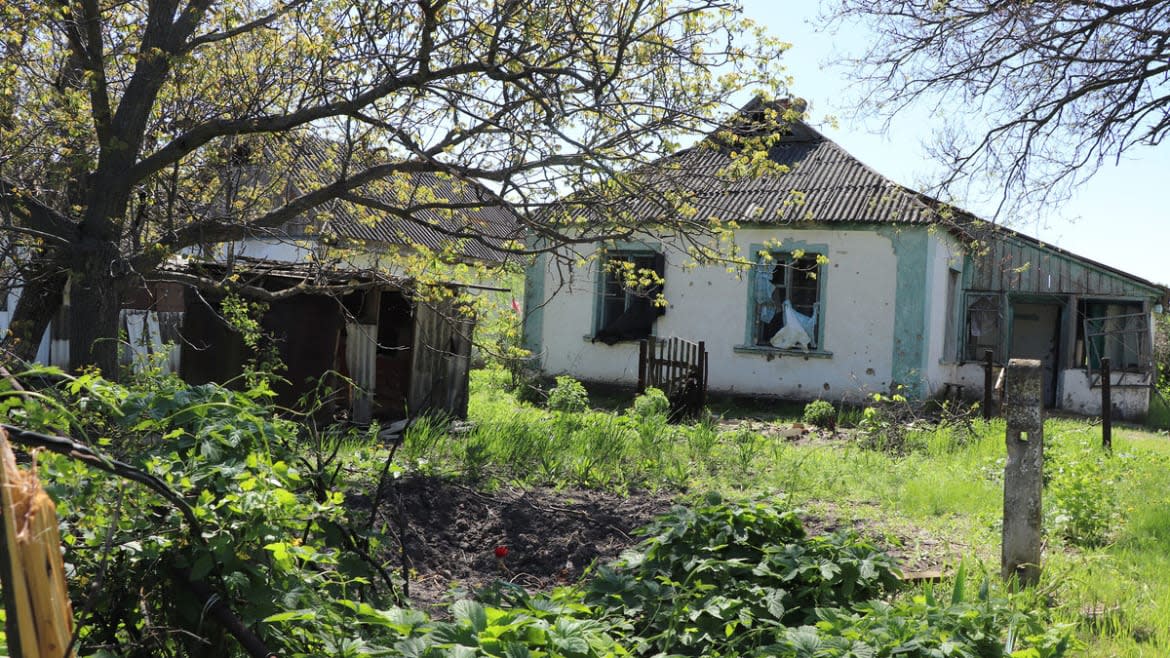
- Oops!Something went wrong.Please try again later.
KRYVYI RIH, Ukraine—Sixty-seven-year-old Valentina said she refused to obey the Russian soldier when he demanded she wear a white armband while walking outside in the Ukrainian village of Kamyanka during the Russian occupation. As she walked outside without it, a Russian soldier allegedly aimed at her with his assault rifle, and Valentina feared the worst.
She felt sure he would shoot her in the back, the same way that she had seen Nazi soldiers kill civilians in World War II movies she had seen.
“But he just looked and looked. He didn’t shoot,” Valentina told The Daily Beast.
Valentina was one of few locals who stayed in villages south of Kryvyi Rih, the largest city in central Ukraine, which came under occupation for roughly a month in March. The Ukrainian army regained control of the villages last month.
“It was terrible when they came. They shot so much. They broke windows; they broke my roof; they smashed everything. I hid in the cellar; if not, I would have been dead,” said Valentina.
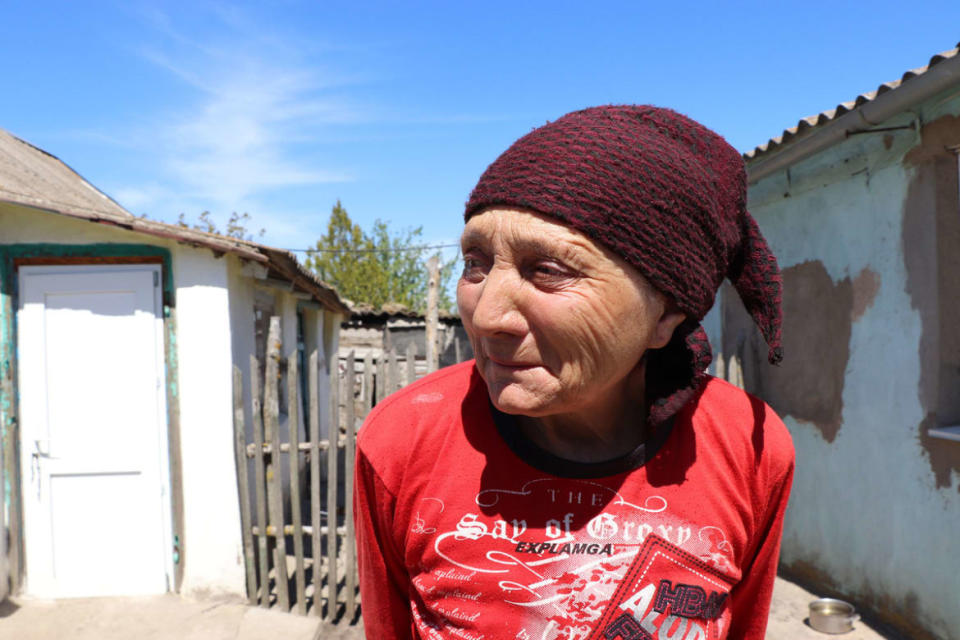
67-year-old Valentina cannot forget what she has seen.
Though the Russians are gone and their hideouts across the village have been destroyed, Valentina remains traumatized from the terror she witnessed over the course of the occupation.
In one particularly horrific incident, she recalled witnessing a Russian soldier shoot a Ukrainian soldier from his hiding place near her barn. She said she found blood on her property and watched a neighbor drag the body to his basement. She feels guilty for not being able to help the Ukrainian soldier, she said—and though the body has since been removed, she is too afraid to go near the barn again.
“The Russians thought that I was hiding Ukrainians in my house, so they came often and searched and searched the place. They came three times and searched everything, and I was so afraid that they would shoot me,” said Valentina. “I told them to shoot my two cats and my dog as well if they decided to shoot me. I didn’t want them to die of hunger.”
“My mother always told me that it was so terrible during the World War, but I didn’t know that war could be so terrible. I had no idea,” she added.
Kamyanka is one of several villages recently recaptured by Ukrainian forces. Over the last few months, the Ukrainian army has been able to push the Russians further back from the industrial center Kryvyi Rih in southern Ukraine, now 70 kilometers from the frontline.

A Russian military vehicle hid near a village house in Kam'yanka and was blown up.
Around the newly liberated villages are visible signs of a devastating war. Houses are ripped apart. Cars and armored vehicles are destroyed. Windows are blown out. The movement of tanks on the village roads has left deep marks.
“Even though the Russians have more men, we have been able to stop them and push them back a little,” Oleksandr Vilkul, head of the military administration in the Kryvyi Rih city, told The Daily Beast. “But to go on the offensive, we will need more weapons.”
In the first few days of the war, Vilkul says that the city blocked its roads to stop Russian advances and gain time. They lost control of several villages, but they managed to stop the region from collapsing altogether. The situation is more stable now, but the fight is far from over. Even in Kryvyi Rih, sirens are heard several times a day as Russians attempt to push through southern villages like Kamyanka to reach Kryvyi Rih, a city that is key to controlling central Ukraine.
Kryvyi Rih is a crucial industrial point in Ukraine and has recently reopened its steel factory, which is one of the largest in Europe. The town is also producing bulletproof vests and plates at hidden facilities to equip the Ukrainian military.
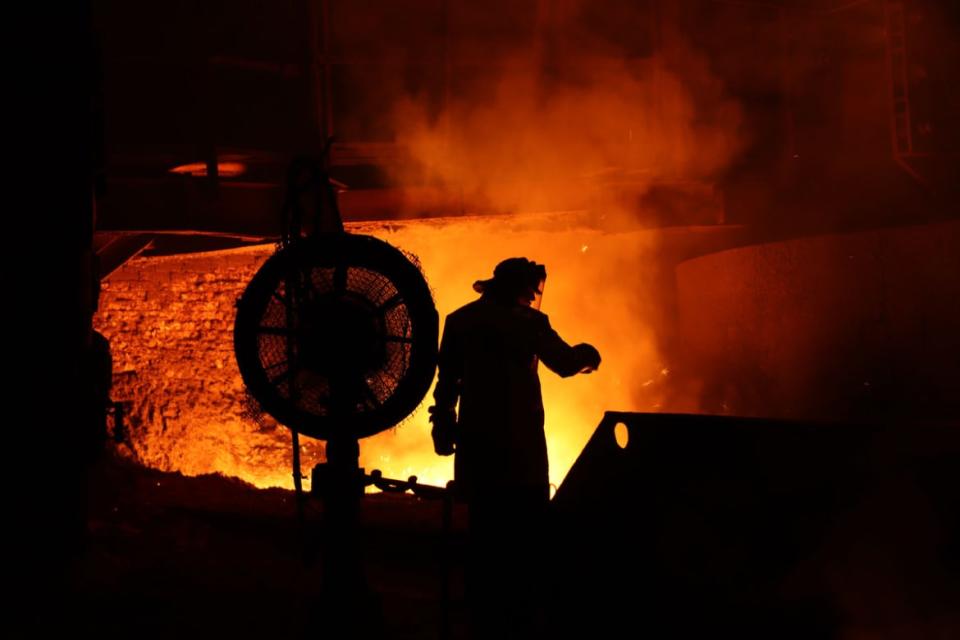
ArcelorMittal steel factory in Kryvyi Rih had restarted production.
“It is a patriotic war for us. Everyone is fighting in the war one way or another,” Vilkul said.
Seventy-one-year-old Alexander remembers vividly when Russian forces moved into his neighbor’s empty house. Many had fled the area as the Russian troops were advancing, but Alexander didn’t want to do that. “Where would he go?,” he thought. He just stayed and hoped for the best.
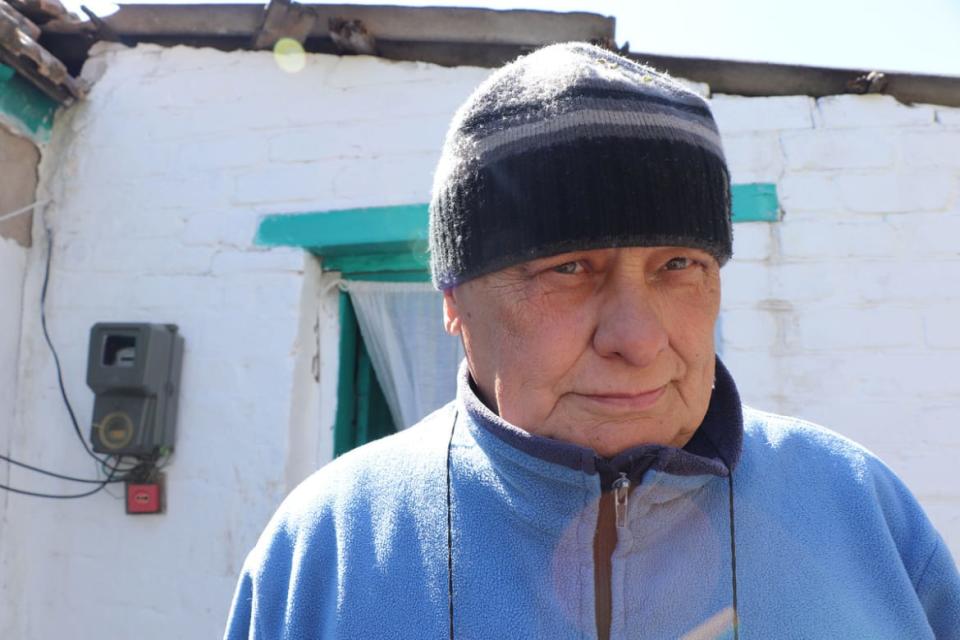
Alexander at his home in Krasnivka.
“I was surprised by how unprofessional they were,” says Alexander, explaining how soldiers from the Russian-backed Donetsk People's Republic came to his house and set up camp in the homes around him. “They had no food and no real equipment. Just machine guns.”
According to Alexander, the soldiers were begging for food at neighbors’ houses and moving around in big groups, ignoring the dangers posed by the Ukrainian drones flying above them. It’s no surprise that Russia is losing so much equipment and men in the war, he mused.
“I told them that they were bumps and that if I were younger and in the military, I would have made real soldiers out of them. Showed them to be real men,” he said, as the sound of Ukrainian artillery fire blared from a distance.
Though normal life has yet to return to Kryvyi Rih, there is a daily influx of refugees to the city, with more than 800 arriving every day, according to Natalia Patrusheva, the leader of the main refugee center in Kryvyi Rih. Most come from southern Ukraine, and many are quickly sent to other regions of Ukraine. Patrusheva says that most are coming from Russian-held Kherson at the Black Sea.
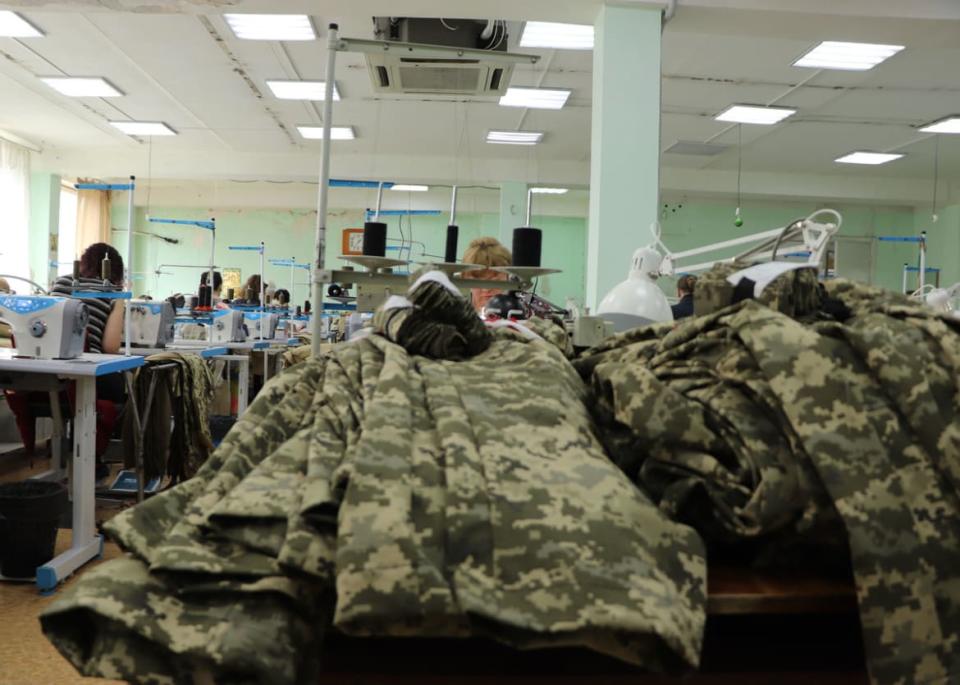
Bulletproof vests are made at a hidden location in Kryvyi Rih.
“They fear that Russia will hold a referendum and include Kherson into Russia. They fear that Russia will completely close the borders,” Patrusheva, referring to rumors that a rigged referendum will soon be held in that region, told The Daily Beast. Russia had held referendums in Russia-annexed Crimea and the Russian-backed separatist regions back in 2014 as well, the results of which were condemned by the West and accused of being falsified to favor pro-Russia puppet candidates.
“The referendum is one of the reasons to leave now. It is getting harder and harder to leave and harder and harder to live in Kherson. Everything Ukrainian is gone,” 18-year-old Maria, who arrived in Kamyanka from Kherson after trying to flee for months, told The Daily Beast. “Our shops are closed down, our flags removed, and everything swapped for Russian things.”
“Every night, something is exploding above us, and there isn’t even any money to take in banks anymore,” she added. “I am just so happy to be here. It is such a relief.”
Get the Daily Beast's biggest scoops and scandals delivered right to your inbox. Sign up now.
Stay informed and gain unlimited access to the Daily Beast's unmatched reporting. Subscribe now.

